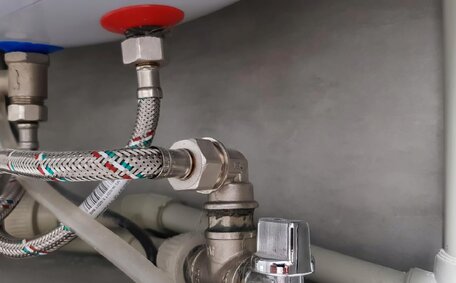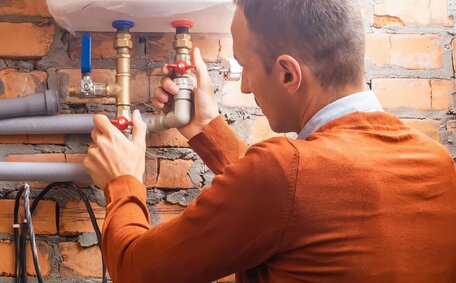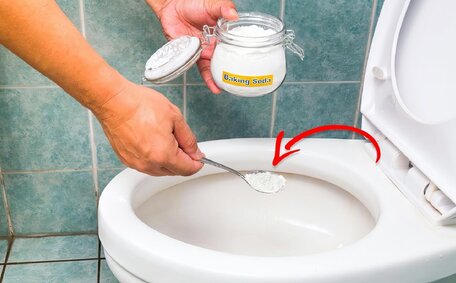Introduction to Pipe Relining
Dealing with tree roots in your plumbing system can be a headache, but pipe relining provides an effective solution. As trees near your home grow, their roots spread in search of water. They are attracted to the moisture inside drain and sewer pipes, pushing their way inside through tiny cracks and gaps.
Once inside, the roots thrive in the nutrients and continue growing, forming a dense root mass. As they multiply, the roots expand and exert force on the pipe walls. Over time, this causes pipe joints to shift and leads to cracks, blockages, leaks, and backups.
Some common signs of tree root damage include gurgling drains, sewer odours in the home, slow draining fixtures, sewage backups, and wet spots in the yard. If you suspect your pipes are affected, a camera inspection can confirm the issue and pinpoint the location of intrusions.
While traditional pipe replacement has been the standard solution, relining provides a minimally invasive alternative. The process involves coating the inside of pipes with a tight-fitting epoxy resin to essentially create a new pipe within the damaged one. This seals off cracks and creates a smooth, impervious barrier that prevents future root growth.
Relining is faster, less disruptive, and more cost-effective than digging up pipes and replacing entire sections. With no need for excavation, it keeps your yard undisturbed while restoring functionality. Your plumbing system will operate like new, without the hassles of root intrusions.
How Tree Roots Damage Pipes
Tree roots are a common cause of pipe damage due to their constant search for moisture and nutrients. As roots extend from nearby trees towards your sewer line or drain pipes, they can infiltrate through tiny cracks or loose joints.
Once inside the pipe, the roots multiply quickly in the moist, oxygen-rich environment. As they grow thicker, the roots expand and apply heavy pressure to the interior walls of the pipe. This leads to fractures, shifting of pipe sections, blockages, and even total collapse in some cases.
Some of the typical problems caused by tree roots include:
- Cracks and leaks that allow water to seep out of the pipe
- Displaced or detached pipe joints
- Blocked drains or reduced flow
- Sewer backups and overflows when roots clog the line
Tree root intrusions progressively worsen over time if not addressed. Extensive root masses can fully plug pipes and lead to complete failure. That’s why early inspection and relining can prevent more extensive repairs down the road.
Signs of Tree Root Damage
There are several common signs indicating your plumbing system may be damaged by invading tree roots. Being aware of these signs allows you to address issues before they become severe:
- Slow draining sinks, tubs, or showers in your home
- Gurgling noises from toilet bowls or drain pipes
- Sewage backup into sinks, tubs or toilets
- Foul sewage odours around drain pipes indoors or outdoors
- Presence of roots visible in or protruding from drain pipes
- Wet spots or soggy soil around drain or sewer pipes outdoors
- Low water pressure or blocked spouts
Don’t ignore these warning signs. Tree root damage tends to gradually worsen over time, leading to leaks, cracks and costly repairs. If you notice any of these issues, contact a professional plumber to inspect your pipes and rectify any problems.
Traditional Pipe Replacement
In the past, the standard solution for tree root damage was to dig up and replace affected sections of pipe. This traditional replacement is highly disruptive, as it requires excavating the ground to access pipes. It also disturbs gardens, landscaping, and outdoor structures.
Full pipe replacement is time-consuming, taking days or weeks to complete. During this period, your home is left without functional plumbing. The process also generates debris and mess that must be hauled away.
Significant demolition and restoration work is involved, driving up costs. Between equipment rentals, new materials, labour and permit fees, pipe replacement can cost thousands of dollars. Proper site restoration afterwards is also required to return the yard to its previous state.
With traditional replacement, there is still a risk of future root intrusions unless preventive measures are taken. Pipes may need to be replaced again down the road if tree roots can eventually find their way back into your sewer line.
In contrast, relining provides a faster, neater and more affordable solution that keeps your yard undisturbed while preventing future root damage once and for all.
What is Pipe Relining?
Pipe relining is a trenchless method of restoring damaged plumbing pipes without having to dig them up for replacement. It involves coating the inside of the existing pipes with a seamless epoxy resin liner. Once cured, this forms a smooth, durable new pipe wall inside the old pipe.
There are two main types of pipe relining used:
- Cured-in-place (CIPP) relining: A resin-saturated felt tube is inserted into the damaged pipe and inflated to fit tightly. UV light or steam cures the resin into a hard, sealed pipe-within-a-pipe.
- Epoxy resin relining: Liquid epoxy is poured or pumped into the pipe and coats the interior surface. The epoxy then hardens into a protective layer.
Pipe relining halts root growth by sealing off cracks and filling voids roots could penetrate. It restores flow capacity, stability and leakproofing without having to excavate. Pipe relining is faster, less disruptive and more affordable than traditional pipe replacement in most cases.
The Pipe Relining Process
Pipe relining offers a trenchless and minimally invasive solution for restoring pipes damaged by tree roots. Unlike traditional pipe replacement methods that require digging, pipe relining can be completed with minimal disruption to your yard or property.
The process begins with a camera inspection to locate all points of root intrusion and assess the overall condition of the pipe. Next, the pipe is thoroughly cleaned to prepare the surface for relining.
For CIPP relining, a resin-saturated felt tube matching the size and length of the original pipe is then fed through and inflated to press tightly against the interior walls. The tube is cured in place using hot water, steam, or UV light. This creates a seamless new pipe lining inside.
Epoxy relining involves pumping or pouring liquid epoxy resin into the host pipe. As the epoxy coats and hardens, it forms a smooth, durable barrier. Both methods effectively seal cracks and voids to prevent future root penetration.
Once cured, the new internal pipe provides restored flow capacity, stability, and leakproofing. Pipe relining can extend the life of ageing pipes for decades while halting root damage. By avoiding excavation, it keeps surrounding utility lines, structures, landscaping and concrete intact.
With trenchless pipe relining, your plumbing system can be restored in a fraction of the time compared to traditional replacement. It also comes at a fraction of the cost, making it an efficient and affordable solution.
How Pipe Relining Removes Tree Roots
Pipe relining offers an effective solution for removing invasive tree roots from your sewer line and drain pipes. Specialised drain cleaning equipment and methods are used to clear out root masses before the relining process.
High-pressure water jetting, also known as hydro jetting, can be used to loosen and flush out small root bundles. For more extensive root infestations, mechanical cutting tools are required. These root cutting augers and saws grind through and shred roots inside the pipe.
The debris is then flushed out to prepare the pipe for epoxy coating. The smooth epoxy barrier seals cracks and voids completely so that any remaining root remnants cannot penetrate back through. It essentially encases and isolates the roots, preventing regrowth or new intrusions.
Over time, the isolated root sections will die off on their own without a water source. The sturdy epoxy liner remains in place for decades, keeping your pipes functioning like new. With the root cause addressed, pipe relining offers a permanent solution to tree root damage.
Advantages of Pipe Relining for Tree Roots
Pipe relining offers several key advantages when dealing with tree root intrusions:
- Minimally invasive - No need to excavate or dig up pipes, preserving lawns and landscaping.
- Fast and efficient - Relining takes a fraction of the time compared to replacement.
- Cost-effective - Significantly cheaper than traditional pipe replacement methods.
- Prevents future damage - Seals all cracks and voids to stop root regrowth.
- Long-lasting - Can extend the life of pipes for decades.
- Maintains flow - Restores full drainage capacity and water pressure.
- Neater process - Avoids the mess and debris of pipe replacement.
- Structurally reinforcing - Strengthens pipes against pressure damage.
- Reduces environmental impact - No waste material to haul to landfills.
By opting for trenchless pipe relining, households and businesses can resolve root intrusions efficiently and cost-effectively while avoiding disruptive pipe replacement projects.
Preventing Future Tree Root Damage
There are several preventative measures you can take to avoid future tree root damage to your drains and sewer lines:
- Carefully select small, slow-growing tree varieties to plant near your home, avoiding fast-growing trees with aggressive root systems.
- Install root barriers around drainage pipes that block and divert root growth. Plastic or metal shields can be positioned to protect pipes.
- Apply chemical root inhibitors around pipes, which discourage roots from entering joints or cracks. However these require periodic reapplication.
- Have drain pipes regularly inspected using CCTV drain cameras to identify potential root intrusions early before they escalate.
- Ensure drain pipes have no cracks or leaks where tree roots can penetrate. Relining ageing pipes provides a protective barrier.
- Cut back tree branches and roots that extend over or near your drainage system to reduce root encroachment.
Taking proactive measures allows you to avoid costly pipe damage. However if tree roots have already infiltrated your drains, pipe relining provides the most effective solution for removing them and preventing future intrusions.
Why Choose Pipe Relining?
Pipe relining offers a superior solution for restoring and protecting drainage systems affected by invasive tree roots. Compared to traditional pipe replacement, relining is faster, neater, more affordable, and less disruptive.
The cured-in-place and epoxy resin methods allow deteriorated pipes to be restored in-place, without having to excavate and remove pipe sections. Yard disruption is minimised, along with the mess and expense of replacements.
Relining seals off all cracks and joints that tree roots could penetrate through. It encases roots within the pipe, cutting off their water access so they die off naturally. With all entry points blocked, new root intrusions are prevented.
The smooth epoxy barrier also restores proper flow capacity and water pressure. Any leaks or cracks are patched, extending the lifespan of ageing drainage pipes.
Home and business owners alike can benefit from this proven trenchless technology. For an experienced pipe relining company providing fast and effective solutions in the North Epping area, contact the team at North Epping Plumbing today.






